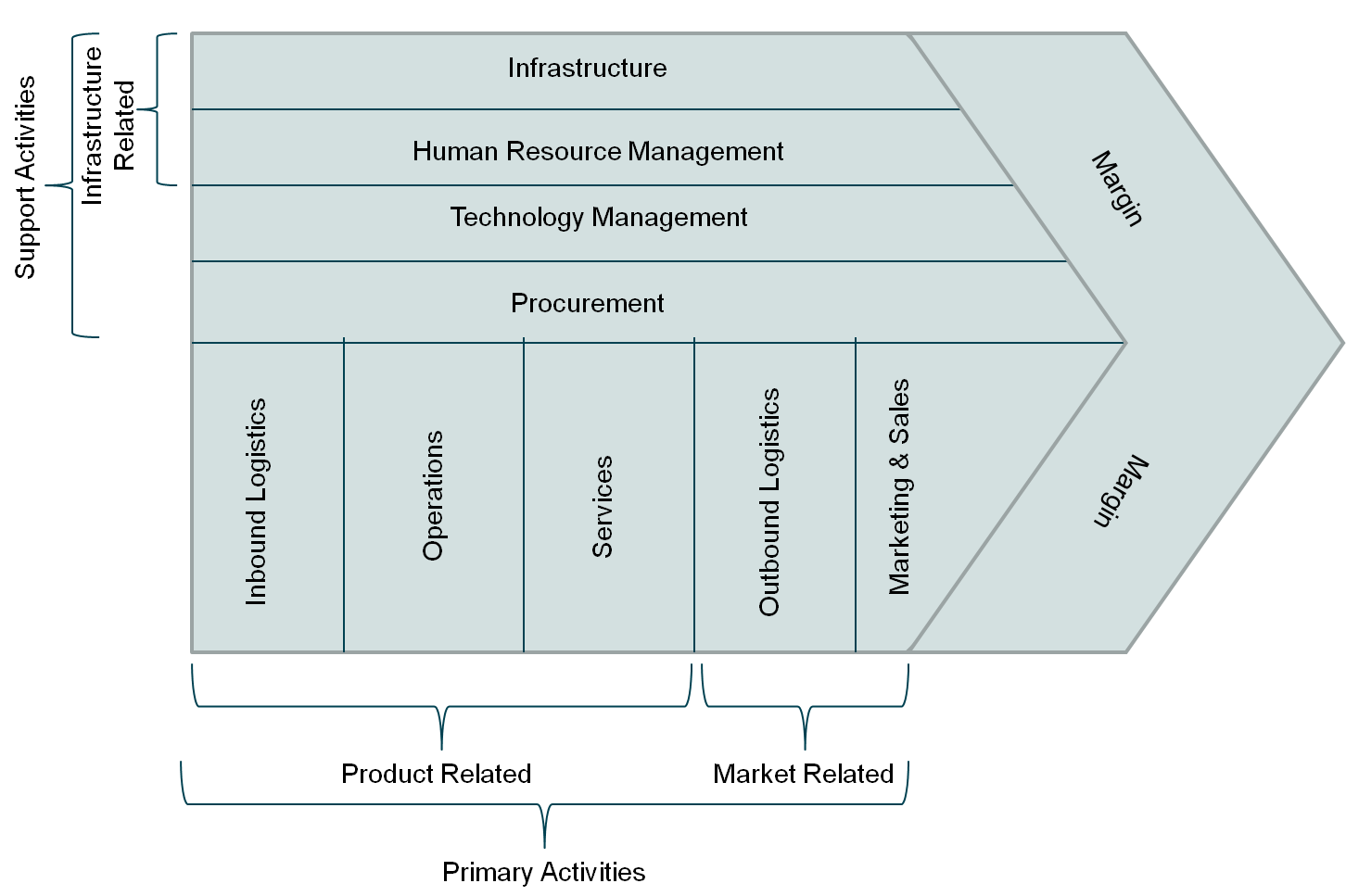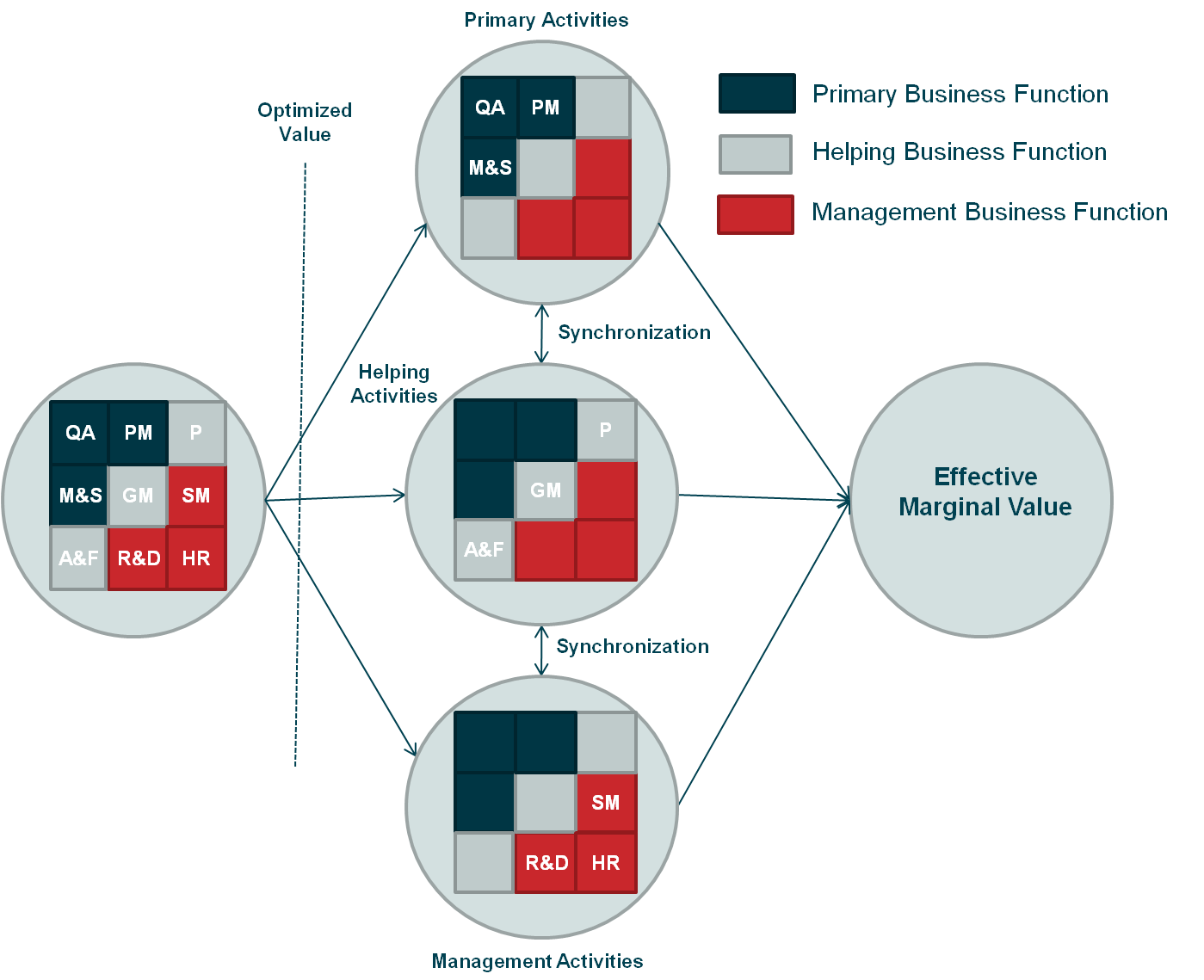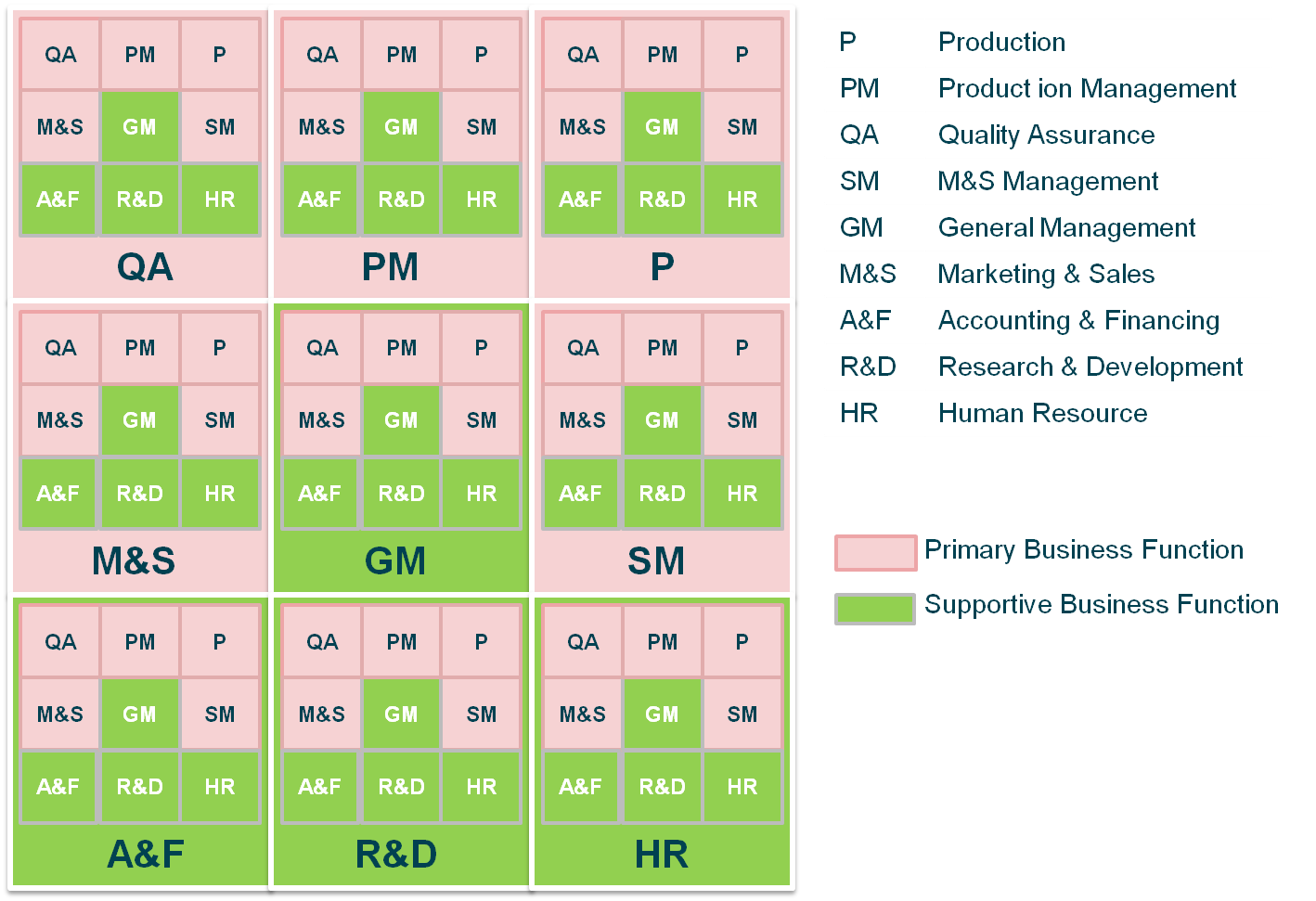Hack:
Mapping of Porter’s value chain activities into business functional units
The value chain framework can be used as powerful analysis tool for the strategic planning and to build the organizational model ensuring an effective leadership model. The value chain concept can be applied also in the individual business unit and can be extended to the whole supply chains and distribution networks. To form a successful product for an organization it is important to add value in each activity that the product goes through during the life cycle. The best possible value can be achieved in the product development process by adding value in each stage. For that it needs all, or a combination of, value chain activities and a proper synchronization among all the related activities. A proper organization is required that contains all the required functional departments to perform these activities and a proper communication approach is required to synchronize the activities of these functional units efficiently.

Primary activities can be classified into product related and market related activities which are described below:
The Technology Management activities can be presented as research and development (R&D) function which increases the stock of knowledge for the organization.
1. Production (P): This is the process to produce a good or service from the inputs collected from the supplier using the resources that carry a cost determined by production factors.



Dear Avijit, Thanks for your article. For discussion in my Discussion Group, will need to have do a similar exerice for Insurance Accounting. Need some suggestions on how to start, though. Need your suggestions here, since not sure how to identify the primary activities or whether to take the final accounts as result or some other. Gratefulif you can guide. Purvez.
- Log in to post comments
Dear Purvez, you are welcome. If you want to map the value chain activities of insurance Accounting in these business unit, I need to know more details about company functions, strategy, etc. Can you please write some details about your organization. You can discuss on this group or In case you need any private consultancy, please contact with me on following e-mail: avijit.saha@outlook.com
- Log in to post comments
Nice article. You mentioned that each business units must perform all nine value added activities to gain effective marginal value. For this, each unit must need individuals who can manage all the activities. How can individual units manage these activities?
- Log in to post comments
- Log in to post comments
First, thanks for the article. You mentioned that nine functional activities are required for value added activity. For each departmental all nine functional activities have to done! For each function do we individual respective person or not?
- Log in to post comments
Dear Sikdar,
Thanks for your comments. Basically in small company we can use this model also. For this case we don't need one or more person for each sub-function. One person can do some sub-functions. As an example, in a small business in which total employee is less than 10 persons, still they must have to perform all the value creation activities. They have to make all the decisions, have to mention the quality, production, and R&D depending on the situation. In this case, may be one person control and perform multiple roles. One who is product manager, can manage also the quality, in some extends can be part of production functions itself.
So it is not important who is doing these activities, most important to identify the value added activities, and performed and synchronized among these. Depending on the context of the activities, individual can perform multiple activities or roles.
Regards
Avijit
- Log in to post comments
Dear Avijit, Thanks for your article on ME. Porter's model. However, this model which was published in the year 1985, in my opinion has out lived its utility. Do you think the same sociological and economic situation prevail in the world? The phenomena of outsourcing as its is known to day is not in existence at that time. The business models ( as given by www.businessmodelgeneration.com) are totally different. We are having different types of capital such as patient capital. Do you still think that this model is universally application or limited in application to few firms? if you have any examples please do share with us.
- Log in to post comments
Dear Prabhakar,
Thanks for your valuable inquiry. Yes, it is truth that sociological, economic situation, and business model have changed significantly in last 25 years. But if we analyze the business value model deeply, we can find the key value creation business elements remain almost same. Many more sub-business elements are introduced depending on the business, ecological, social, and demographical model. As an example, in the product oriented company on and off-line services, transportation, consultancy, financing for the product and many more features are the parts of product itself. For the simplicity, management and leadership model, it will be most effective to consider all the product related features that create value on customer on return on profit for the company as part of production function. Also depending on core competences, most companies outsource some parts of full chain production functions to use the business resources efficiently and in some cases to save the cost. So although environment is changed in years, but we can still use the different business functions in one of these 9 value creation business functions and synchronizing among these to achieve the effective value on each business functions. This will not only simplify the model but also helpful to control the key outcome to ease the leadership context.
So I think, this model still can be used in most businesses but have to rearrange the business elements and organize these efficiently in these 9 business functions that will simplify the leadership and controlling process.
Regards
Avijit
- Log in to post comments
The edi integration of supply chains, especially upstream and downstream with secondary and tertiary supply chains can become incredibly complex if you don't get the right help with the integration. Someone like http://www.segurasystems.com/ who have experience through many different sectors can help.
- Log in to post comments
Supply chain is very important but sometimes its complicated for some reason. But having a planned and smooth supply chain logistics will help a business function more and gain more revenue. A business will be more successful if the supply chain is efficient and has a competitive advantage within the industry.
Regards,
BR International Value Added Services Logistics Firm
- Log in to post comments






You need to register in order to submit a comment.